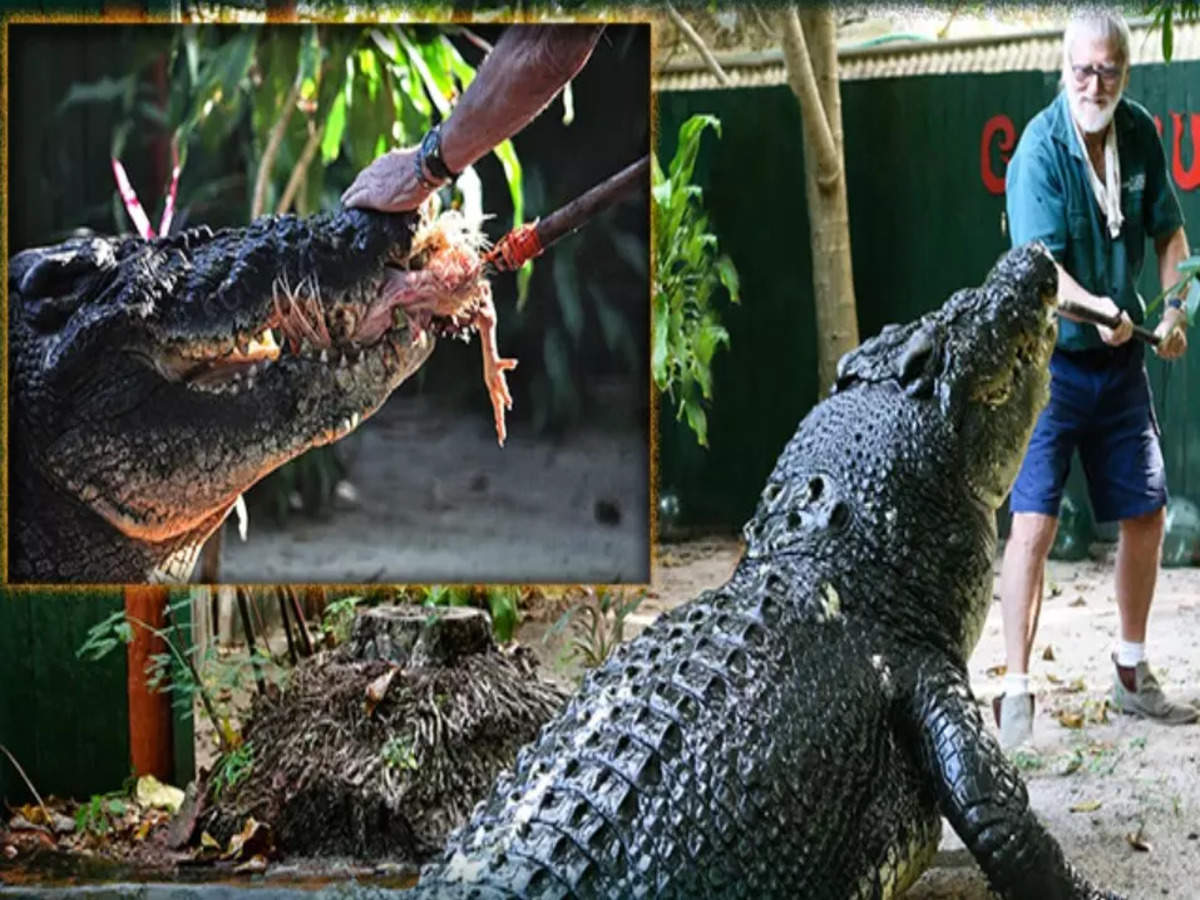Introduction to Alligators
Alligators evoke a mix of fascination and fear. These ancient reptiles have roamed the earth for millions of years, adapting to their environments with incredible efficiency. Among them, tales circulate about the largest alligator—an awe-inspiring creature that commands respect from both nature enthusiasts and locals alike. But what happens when you cross paths with one? Understanding these magnificent beasts is crucial not just for your safety but also for appreciating their role in our ecosystem. This guide offers five effective strategies to help you navigate encounters with the largest alligator while ensuring everyone stays safe and sound. Whether you’re an adventurer or simply curious about these giants, read on to learn how best to coexist in harmony!
The Largest Alligator Ever Recorded
The largest alligator ever recorded measured an astonishing 19 feet and 2 inches. This massive reptile was captured in Louisiana in 2000, making it a true legend among wildlife enthusiasts.
Weighing nearly 2,000 pounds, this colossal creature sparked debates and captivated imaginations worldwide. Its size is a testament to the incredible adaptability of alligators.
These reptiles can thrive in various environments, from swamps to rivers. The sheer scale of such an alligator showcases nature’s power and mystery largest alligator.
Sightings of enormous gators continue to fuel fascination. Every year, stories emerge about close encounters with sizeable specimens lurking near waterways.
While sightings may not match that record-breaking giant, they remind us that these creatures deserve respect and caution when encountered in their natural habitat.
Understanding Alligator Behavior
Alligator behavior can be fascinating yet unpredictable. These reptiles are highly territorial and protective of their nesting areas, especially during breeding season.
Understanding their body language is crucial. largest alligator An alligator with its mouth open may not always be aggressive; it could simply be basking in the sun or regulating its body temperature. However, a hissing sound is a warning sign that you should back away.
Most alligators prefer to avoid humans, but they can become bold if food is involved. Feeding them conditions them to associate people with meals, leading to dangerous encounters.
Recognizing signs of stress in an alligator helps keep both parties safe. If an alligator dives into the water or quickly retreats from your presence, it’s likely feeling threatened.
Awareness of these behaviors allows for safer interactions while enjoying nature’s wonders.
Strategy 1: Stay Calm and Keep Your Distance
Encountering the largest alligator can be a heart-pounding experience. Your instinct may scream to run, but staying calm is crucial. Panic only heightens danger for you and the animal.
Take a deep breath and assess your surroundings. Observe from a safe distance—at least 30 feet away. Alligators are naturally curious creatures but will often retreat if they feel unthreatened.
Moving slowly can also help keep tensions low. Sudden movements might provoke an alligator’s defensive instincts, so maintain your composure as you navigate the situation.
Remember that these reptiles don’t see humans as prey unless threatened. By respecting their space, you’re reducing stress for both yourself and the alligator. Keeping your cool fosters an atmosphere of safety in this unpredictable moment, allowing nature to take its course without escalation or conflict.
Strategy 2: Use a Deterrent or Repellent
When dealing with the largest alligator, it’s essential to consider using deterrents or repellents. These tools can create a barrier between you and these massive reptiles.
Commercial alligator repellents are available and often contain natural ingredients like garlic or vinegar. The strong odors can discourage an alligator from approaching your area. Spraying these around your property may help keep them at bay.
Another option is sound deterrents. Alligators are sensitive to noise, particularly loud sounds that mimic distress signals in their environment. largest alligator Motion-activated devices can be effective for this purpose.
Remember always to follow safety guidelines when using any product designed for wildlife control. It’s vital not just to deter but also to maintain a safe distance from these powerful creatures while protecting yourself and your surroundings effectively.
Strategy 3: Seek Professional Help
When faced with the largest alligator, it’s crucial to recognize when professional intervention is necessary. These creatures can be unpredictable and dangerous, especially if cornered or threatened.
Contact wildlife control specialists who are trained in handling alligators. They possess the knowledge and tools required to manage these situations safely. Their expertise can prevent potential harm to both you and the animal.
Additionally, local authorities may have protocols for dealing with large reptiles in urban areas. Don’t hesitate to reach out for assistance; their priority will be public safety.
Professional help ensures that you’re not alone in this unnerving encounter. Instead of attempting a risky approach yourself, rely on experts who understand alligator behavior and know how to handle them appropriately.
Strategy 4: Create Barriers and Avoid Attracting Alligators
Creating barriers is a smart move to keep the largest alligator at bay. Fencing can be an effective solution, especially around pools or yards near water bodies. Use sturdy materials that are tall enough to prevent climbing and buried deep to deter digging.
Another essential step is managing your environment. Remove food sources, like pet food left outside, which might lure these reptiles closer. Keep trash secured in animal-proof containers.
Eliminating standing water can also reduce their interest in your area. largest alligator Alligators thrive near stagnant ponds or marshes where they find ample food and shelter.
Be mindful of landscaping too; dense vegetation provides hiding spots for alligators looking for easy access to prey. Opt for open spaces with fewer places for them to conceal themselves while you enjoy outdoor activities safely and peacefully.
Strategy 5: Know How to React if Attacked by an Alligator
If you find yourself in the terrifying situation of an alligator attack, your immediate reaction is crucial. First and foremost, avoid panicking. Staying calm can help you think clearly.
Should an alligator grab hold of you, focus on defending vital areas like your head and neck. Use any available object to strike its eyes or snout; these are sensitive spots that may cause it to release its grip.
Remember that playing dead is not a strategy with alligators. Instead, if you manage to escape their jaws, make a swift getaway towards land or safety.
Once you’re out of danger, seek medical assistance immediately for potential injuries or infections from bites. Awareness and preparedness can save lives in such encounters. Always prioritize safety when near known habitats of the largest alligator species.
Strategy
When it comes to dealing with the largest alligator, understanding and preparation are key. It’s essential to respect these magnificent creatures while ensuring your safety. By staying calm, using deterrents, seeking help when necessary, creating barriers, and knowing how to react in critical situations, you can navigate encounters with confidence.
Each strategy serves a unique purpose but ultimately revolves around awareness of your surroundings and the behavior of alligators. If you find yourself in an area inhabited by these reptiles, remember that they are part of a delicate ecosystem. With the right approach and mindset, you can coexist safely while appreciating their role in nature. Stay informed and prepared—your safety is paramount!

















